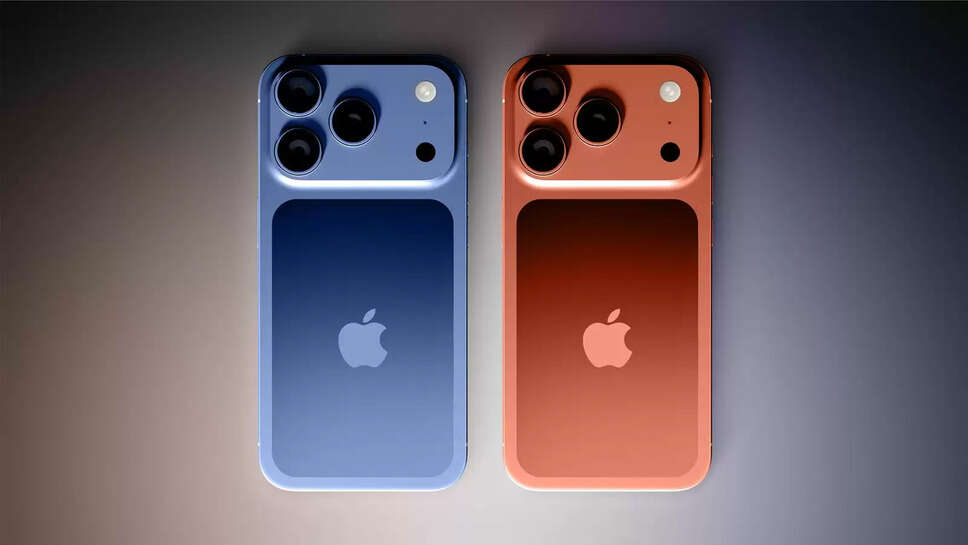Cook’s Crucial Moment: Will iPhone 17 Prove the World Still Wants an iPhone?

When Apple confirmed the launch date of its iPhone 17, the announcement was met with the familiar buzz of anticipation, speculation, and scrutiny that has come to define the Cupertino giant’s annual ritual. Yet beneath the excitement lies a serious question: does the world still want an iPhone as much as it once did? For Tim Cook and his team, the release of the iPhone 17 represents more than just another product cycle—it is a litmus test for Apple’s continued relevance in an increasingly crowded and saturated smartphone market.
The Weight of Legacy
Since its debut in 2007, the iPhone has not just been a device; it has been a cultural phenomenon that transformed personal technology, communication, and global consumer behavior. Each new model has traditionally set benchmarks, dictating the pace of the industry and redefining consumer expectations.
But in recent years, the narrative has shifted. Incremental upgrades, maturing hardware, and soaring price tags have raised doubts about whether Apple can still deliver the same level of excitement. Critics point out that the once-radical innovations—multi-touch displays, Face ID, advanced cameras—now feel like incremental refinements rather than revolutionary breakthroughs. Against this backdrop, the iPhone 17 carries the burden of rekindling that old spark.
What’s at Stake
For Apple, the stakes couldn’t be higher. The iPhone still contributes the lion’s share of its revenue, making the success or stagnation of each new model critical to shareholder confidence and brand prestige. With competition from Samsung, Google, and a rapidly rising Chinese ecosystem led by Xiaomi and Huawei, Apple cannot afford to be perceived as coasting.
Moreover, global smartphone demand has plateaued. In mature markets like the US and Europe, replacement cycles are lengthening; users are holding onto devices for four to five years. In emerging economies, Apple faces the double challenge of high pricing and stronger local competitors.
The iPhone 17, therefore, must do more than generate queues outside Apple Stores. It must convince millions that the iPhone is still not only desirable but indispensable.
The Promise of iPhone 17
Leaks and insider whispers suggest that the iPhone 17 will feature significant updates in three areas: design, intelligence, and sustainability. A slimmer form factor, potentially the thinnest since the iPhone 6, has already generated buzz. Rumors of a completely bezel-free display and under-screen Face ID point to a device that may visually reset consumer expectations.
On the intelligence front, Apple is expected to lean heavily into AI—an area where it has been accused of lagging behind rivals. A new generation of on-device machine learning, powered by an enhanced neural engine, could bring smarter Siri interactions, predictive personalization, and seamless integration with the broader Apple ecosystem.
Sustainability may also play a starring role. With regulators and consumers alike demanding greener technology, the iPhone 17 may debut with recycled rare earth materials, longer battery lifespan, and energy-efficient components that allow Apple to position itself not only as innovative but also responsible.
Tim Cook’s Leadership Moment
For Tim Cook, who has helmed Apple for over a decade, the iPhone 17 launch represents both continuity and test. Cook’s tenure has been marked by operational excellence, services growth, and consistent financial performance. Yet he has faced criticism for presiding over an era of incremental innovation.
The question facing Cook is whether Apple under his leadership can once again deliver a product that feels transformational rather than evolutionary. The answer will shape not just consumer sentiment but also investor confidence, as Apple navigates a future where services, wearables, and augmented reality are expected to gradually share the stage with the iPhone.
Consumer Sentiment: Excitement vs. Fatigue
Public sentiment ahead of the iPhone 17 launch is mixed. Loyalists remain eager, ready to upgrade regardless of cost, driven by trust in Apple’s brand and ecosystem. For them, each new iPhone is less about novelty and more about staying current in a digital world seamlessly tied to Apple services.
But a growing section of consumers exhibits fatigue. “Why should I spend another $1,000 when my iPhone 14 still works perfectly?” is a question increasingly asked in online forums. This skepticism is compounded by the rise of mid-range competitors offering premium-like features at a fraction of Apple’s price.
The iPhone 17 must therefore strike a balance: delivering enough newness to justify upgrades without alienating users with sky-high costs.
The Global Competition Factor
Apple’s litmus test is not happening in isolation. Samsung continues to push foldable phones into the mainstream, Huawei is mounting a comeback with advanced chips, and Google is investing heavily in AI-first smartphones. Chinese brands are aggressively innovating in areas like charging speed, camera performance, and display technology.
In such a landscape, Apple must prove that it can still lead, not just follow. Its traditional strengths—ecosystem lock-in, premium design, and user trust—remain powerful, but in an era where technological leaps are happening outside Cupertino, Apple cannot rely on brand prestige alone.
Beyond the Device: Ecosystem and Services
One argument in Apple’s favor is that the iPhone is no longer just a phone—it is a gateway. Every iPhone sold deepens the consumer’s attachment to Apple Music, iCloud, Apple Pay, and the App Store. The iPhone 17, therefore, doesn’t just represent hardware sales but also recurring services revenue.
Analysts suggest that Apple’s true litmus test lies in whether consumers still see the iPhone as the anchor of their digital lives. If the iPhone 17 strengthens that role, then even modest hardware innovation could sustain Apple’s dominance.
Risks on the Horizon
Despite optimism, risks abound. Regulatory scrutiny on App Store practices is intensifying in multiple regions. Supply chain vulnerabilities, especially around chip production and rare earths, could hamper availability. Pricing strategies remain delicate: too high, and Apple risks alienating consumers; too low, and it undermines its premium image.
There is also the broader cultural risk: if the iPhone 17 is perceived as “more of the same,” Apple may find it increasingly difficult to justify its annual launch cycle as a global event.
The Verdict Awaits
As the launch date approaches, anticipation builds, but so does scrutiny. For Apple fans, the iPhone 17 promises another chance to experience the thrill of unboxing a device that symbolizes status, design, and connectivity. For skeptics, it will be a test of whether Apple still deserves its aura of innovation.
For Tim Cook and his leadership team, it is an opportunity—and a challenge—to remind the world why the iPhone matters. The outcome will not just shape sales figures for the next quarter but also define Apple’s place in the broader story of technology’s future.
A Litmus Test for the Future
The iPhone 17 is not merely another iteration; it is Apple’s answer to growing doubts about its innovation engine and consumer appeal. If the device lives up to the hype—through design breakthroughs, AI integration, and sustainability commitments—it could reaffirm Apple’s dominance. If not, it may reinforce the narrative that the iPhone era is shifting from revolutionary to routine.
Either way, when Tim Cook walks onto the stage to unveil the iPhone 17, the world will be watching closely—not just to see what Apple has built, but to decide whether the iPhone is still the future, or merely the past dressed in glass and steel.
